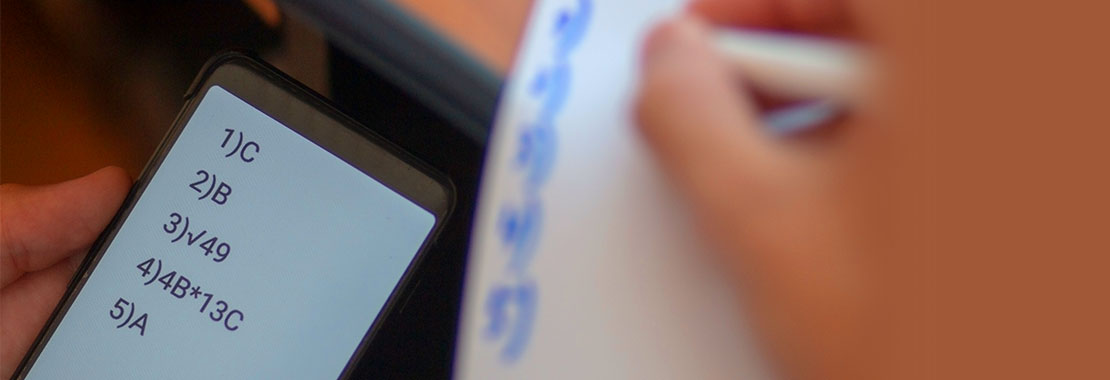Audrey Wick is an English professor at Blinn College in central Texas
Academic integrity is an important component of any higher education course. Establishing that integrity is something instructors can do on day one by addressing class policies against cheating or sharing the institution’s honor code. However, as the semester unfolds, instructors should uphold standards and be vigilant when it comes to maintaining them in the course.
To prevent cheating and curb plagiarism, instructors can take several steps.
Start with Assignment Design
While there is no assignment that is “plagiarism-proof,” instructors can design assignments in such a way that encourages original work. For written assignments, group projects or essay-based exams, consider doing a web search for questions to see if popular student-facing cheating sites have content that may be tempting for students to use. If so, reword the questions you are asking of students or steer clear of certain content from the purposes of assignment creation.
If you routinely give multiple-choice assessments to students, consider using a pool of questions rather than a set that is the same for all students. Many learning management systems and publisher platforms allow instructors to assign question pools for students that ensure they won’t see the same questions in the same order on exams.
Likewise, these systems often have additional measures that can be added to exams to prevent cheating, like randomizing answer choices and preventing screen-to-screen movement while an exam is underway. Instructors can also set strict time limits, establish deadlines and require password input to help ensure assignment integrity.
Use Existing Technology from Your Institution
Most institutions have site licenses that allow instructors to use various digital tools in their courses. Some of the technologies may only be available for fully online courses; others may be accessible to instructors regardless of modality. If you are unsure what is available at your institution, check with your supervisor or institution’s technology services department.
Then, think about what type of technology could best serve your needs. For instance, if you would like students to be monitored while they take exams, consider proctoring services like ProctorU or Proctorio.
The suite of assessment services available through Respondus, including LockDown Browser and Respondus Monitor, offer other layers of protection. Some integrate with existing learning management systems, like Proctortrack and Honorlock.
Use Plagiarism Detection Tools
Students can be crafty when it comes to cheating, especially around written assignments. From purchasing papers to making up sources to not giving proper credit to another’s ideas, ways that students plagiarize are varied. There are even emerging trends like using AI-based writing, text spinning and spyware that students employ.
To curb the possibility of students submitting unoriginal work and to catch them when they do, instructors can use learning management plagiarism detection tools, like SafeAssign in Blackboard or Turnitin’s Originality Checker in Brightspace. Having students directly upload assignments to a digital dropbox in Turnitin.com is also an option.
Free, web-based plagiarism detectors also exist, such as at PlagiarismDetector. Beware, however, that some student-facing plagiarism sites that promise “help” for students actually include links and advertisements for paper mills and contract cheating groups; the assistive parts are simply fronts for these less-savory options.
You’re Ready to Be Proactive!
Teaching students to be good stewards of information and to take ownership of their learning by submitting original work is part of their education process. Instructors can be proactive through assignment design, technology integration and plagiarism detection to diminish opportunities for students to cheat.
For more peer strategies for preventing cheating, visit us on Today’s Learner.

